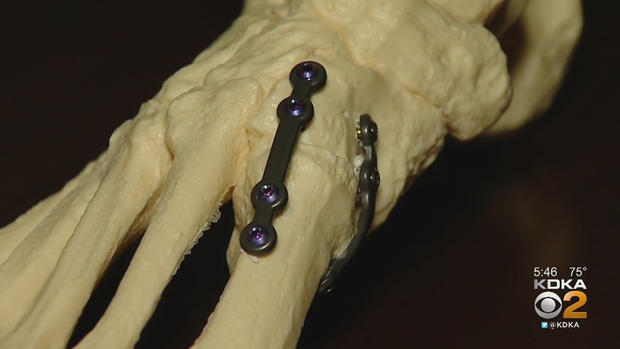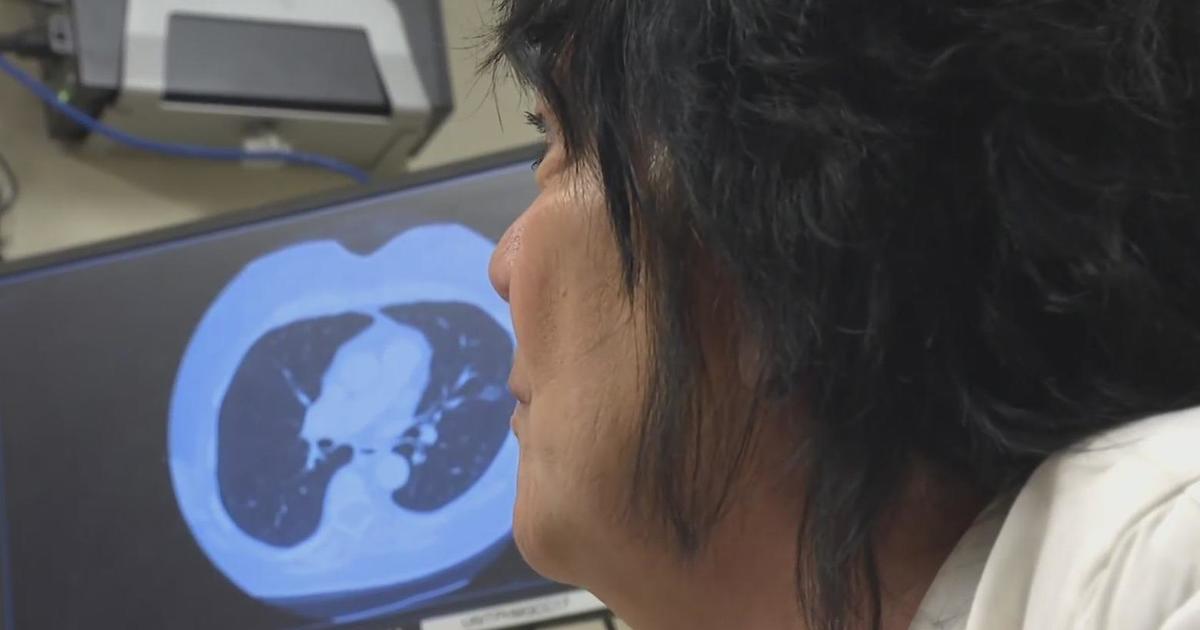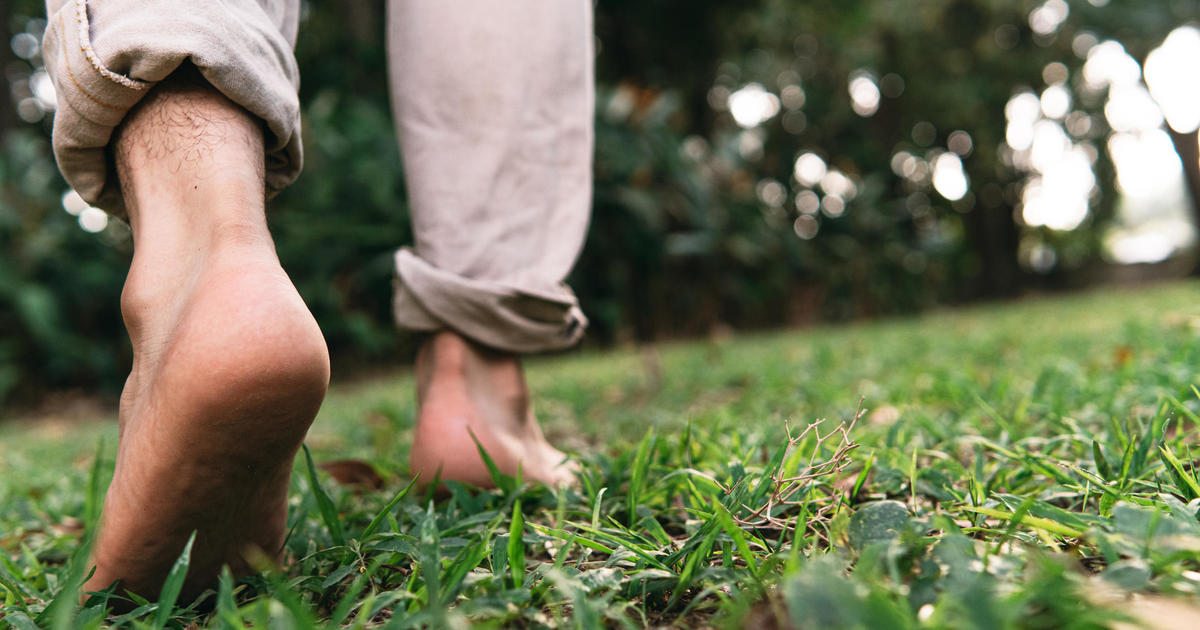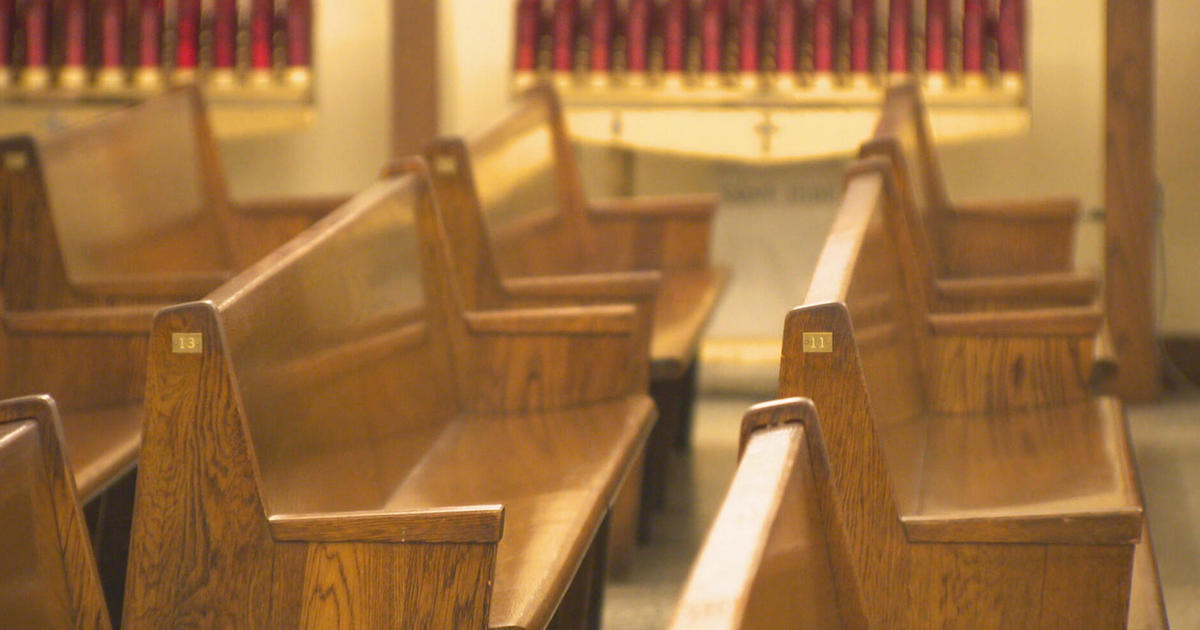New Lapiplasty Treatment Helping Bunion Sufferers Get Back On Their Feet Faster
PITTSBURGH (KDKA) -- Something was wrong with Ann Oxley's foot.
"Through the years, with all the activities I was doing, it seemed progressively would get worse. It got to the point where I was very limited in the shoes I could wear. My main concern was not being able to keep up with my kids, and hikes and walks, as well as just going to and from their sports activities," she said. "I definitely had a bump. I thought it was a large bump. And it did come along with the pain and the discomfort."
"Most of the time, our patients will complain of pain," WVU Hospitals orthopedic surgeon Dr. Bob Santrock said. "My average patient is 45 years old. They are working, they have children, they have events to go to."
People who get bunions are born with the tendency.
"Most people think shoes cause bunions. They don't, but they may make them come on faster," Santrock said.
If low-heeled, comfortable shoes aren't helping, and the pain interferes with daily activities, surgery is a consideration.
"Changed shoes. I modified my activities. I quit running," Oxley said.
"If you want to be a runner, I've got to find a way to make you a runner. If you want to wear fashionable shoes, I've got to find a way to help you wear fashionable shoes," Santrock said.
Most people see a bump on the big toe on the inside of the foot and identify it as the bunion, but actually the problem is at a joint higher up in the foot.
One approach is to shave down the bony prominence, but that doesn't correct the issue.
"Just hiding the bump has led to the recurrence of the bump coming back," Santrock said, "and the reason why it comes back is that that joint that started it all was never addressed."
Santrock, at West Virginia University, with colleagues from around the country, developed a new technique called lapiplasty. It realigns the bones at the problematic joint.
During the surgery, the doctor makes an incision on the top of the foot and takes out the cartilage at the involved joint.
Jigs and clamps hold the bones in realignment. The bones are then fixed into position with titanium plates and screws. They are flat and flexible.
"They're meant to move with weight bearing," Santrock said.
Patients can bear weight immediately after the procedure.
"It is an outpatient surgery. You're only here the afternoon or morning, and then you're gone," Santrock said. "Most people go back to work about two weeks after surgery. They say they can't wait for the other side so they can get a pair of shoes that match now."
After surgery, incision care, swelling control and watching for recurrence or the bones not healing are important.
In the four-year history of this surgery, complications occur in about 1% of patients.
"We will pass 10,000 surgeries in our history this summer," Santrock said.
In the United States, 150,000 bunion surgeries are done a year.
You cannot have lapiplasty if you have a nerve problem called neuropathy or severe arthritis of the big toe.
Oxley finally had procedure in December.
She was glad she didn't have to be in a cast for three months.
"I was glad that I would just be able to be in a boot for six weeks," she said. "To actually have a surgery where they fixed a bone and to be able to walk on it in the same day, is pretty amazing."
The general advice is no running or jumping for four months, but three months after surgery, Oxley had no restrictions.
"I'm probably at the gym about four times a week. I'm keeping up with the kids. I'm up and down steps. I can cook. My husband and I went to The Masters. I was able to stand and walk around for six hours, so I have not been limited in any of my activities. And the bump is gone," she said.




